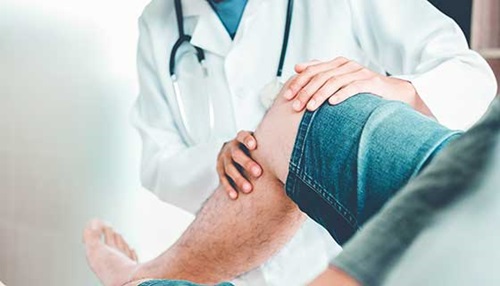
"Harvesting Global Excellency"
Unicule Virtual Intelligence Pvt. Ltd.

"Harvesting Global Excellency"
Unicule Virtual Intelligence Pvt. Ltd.
Joints are the areas where 2 or more bones meet. Most joints are mobile, allowing the bones to move. Basically, the knee is 2 long leg bones held together by muscles, ligaments, and tendons. Each bone end is covered with a layer of cartilage that absorbs shock and protects the knee.
There are 2 groups of muscles involved in the knee, including the quadriceps muscles (located on the front of the thighs), which straighten the legs, and the hamstring muscles (located on the back of the thighs), which bend the leg at the knee.
Tendons are tough cords of connective tissue that connect muscles to bones. Ligaments are elastic bands of tissue that connect bone to bone. Some ligaments of the knee provide stability and protection of the joints, while other ligaments limit forward and backward movement of the tibia (shin bone).
The knee consists of the following:
Tibia. This is the shin bone or larger bone of the lower leg.
Femur. This is the thighbone or upper leg bone.
Patella. This is the kneecap.
Cartilage. A type of tissue that covers the surface of a bone at a joint. Cartilage helps reduce the friction of movement within a joint.
Synovial membrane. A tissue that lines the joint and seals it into a joint capsule. The synovial membrane secretes synovial fluid (a clear, sticky fluid) around the joint to lubricate it.
Ligament. A type of tough, elastic connective tissue that surrounds the joint to give support and limits the joint's movement.
Tendon. A type of tough connective tissue that connects muscles to bones and helps to control movement of the joint.
Meniscus. A curved part of cartilage in the knees and other joints that acts as a shock absorber, increases contact area, and deepens the knee joint.
Knee replacement surgery is a treatment for pain and disability in the knee. The most common condition that results in the need for knee replacement surgery is osteoarthritis.
Osteoarthritis is characterized by the breakdown of joint cartilage. Damage to the cartilage and bones limits movement and may cause pain. People with severe degenerative joint disease may be unable to do normal activities that involve bending at the knee, such as walking or climbing stairs, because they are painful. The knee may swell or "give-way" because the joint is not stable.
.png?h=220&iar=0&mh=360&mw=520&w=200&hash=2035C672E879D11F7C8308A2B99AE08A)
Other forms of arthritis, such as rheumatoid arthritis and arthritis that results from a knee injury, may also lead to degeneration of the knee joint. In addition, fractures, torn cartilage, and/or torn ligaments may lead to irreversible damage to the knee joint.
If medical treatments are not satisfactory, knee replacement surgery may be an effective treatment. Some medical treatments for degenerative joint disease may include, but are not limited to, the following:
Anti-inflammatory medications
Glucosamine and chondroitin sulfate
Pain medications
Limiting painful activities
Assistive devices for walking (such as a cane)
Physical therapy
Cortisone injections into the knee joint
Viscosupplementation injections (to add lubrication into the joint to make joint movement less painful)
Weight loss (for obese persons)
There may be other reasons for your doctor to recommend a knee replacement surgery.

Have you been diagnosed with arthritis of your knees? Watch this webinar with Dr. Vishal Hegde, hip and knee surgeon and Assistant Professor of Orthopaedic Surgery at Johns Hopkins as he discusses the diagnosis and management of knee osteoarthritis and treatment options to improve your function to get you back to the activities you enjoy.